|
Nail Making
In 1710 Darlaston had 23 nail makers. By
this time nail making had become extremely simple due to
the invention of the slitting mill in 1565. This
prepared iron rods for the nailers, so that all they had
to do was to cut the rod to the correct length, point
one end, and make the head. This was one of the first
examples of mass production, as large quantities of
nails could be made simply by unskilled people. The
nailers couldn't afford to buy the rods themselves, they
were advanced to them by the mills, to where they
returned the completed nails and were paid for them.
They were also given standard allowances for waste.
Nailing was a seasonal occupation and dealers spoke of
the difficulty of obtaining nails at harvest time. About
the end of the 18th century this began to change as
factories appeared employing large numbers of
wage-earning people. A bundle of rods weighed 60 pounds
and was 4ft 6" long. The nails were characterised
according to the number produced from a given weight of
iron. Long thousand (1,200) nails weighing 4 pounds,
were known as four penny bundles. Larger nails were
called 100 work, and were priced by the hundred. They
were more profitable than the smaller ones, as less work
was required to produce them, and less waste produced.
There were many types of nails including:
brads,
tacks, spriggs, dog-eared frost nails, sheath nails, and
sparrables
Most of these types go back to the early
16th century. The introduction of machine nailing in
1810 led to a further increase in the numbers of people
employed in the industry, but in Darlaston the last nail
manufacturer had closed by 1888 due to the preference
for light engineering. Even by 1818 such diverse iron
products as fire irons, bullet moulds, thumb latches,
and handcuffs were produced here.
Clock Making
In the 18th century there were several highly
skilled Darlaston clockmakers producing long case clocks
to a very high standard. The photographs below show some
of the wonderful clocks that they produced. |
 |
This example was made by D. Hawthorn in about 1705.
It has a 12" brass dial with silvered chapter ring,
minute and quarter hour gradations, and is housed in a
fine walnut case. |
| This fine hoop and spike clock was made by Thomas
Brewer in about 1750. It has a 10inch dial with cherub
spandrels, and strikes on the hour.
Photo: Laurence Cook.
|
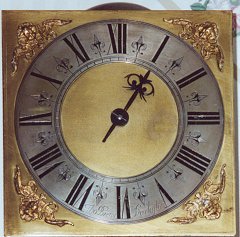 |
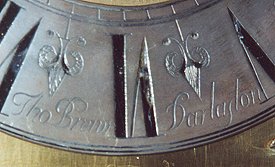 |
Thomas Brewer's name as inscribed on the clock's
chapter ring.
Photo: Laurence Cook. |
| Another fine Darlaston made clock that is
inscribed "Jam Brewer, Darlistone". It
was made by James Brewer who may have been a
relative of Thomas Brewer.
Photo: |
 |
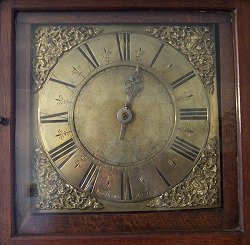 |
A close-up view of the face of the
James Brewer clock.
Photo: |
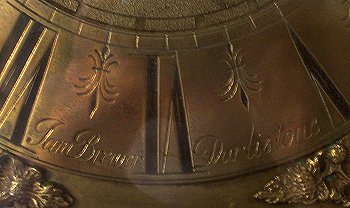
The inscription on James Brewer's clock.
Courtesy of Stuart Cooper. |
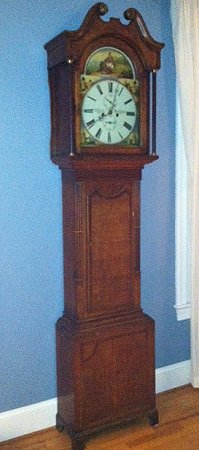 |
|
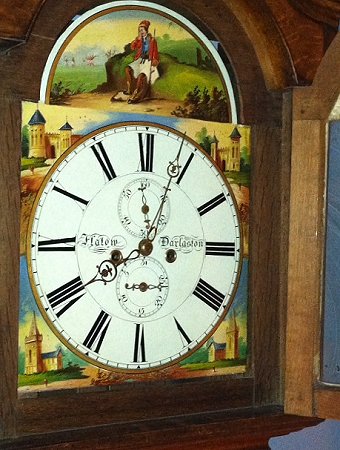 |
| This is another fine example of
a Darlaston-made clock. The lucky owner is
|
|
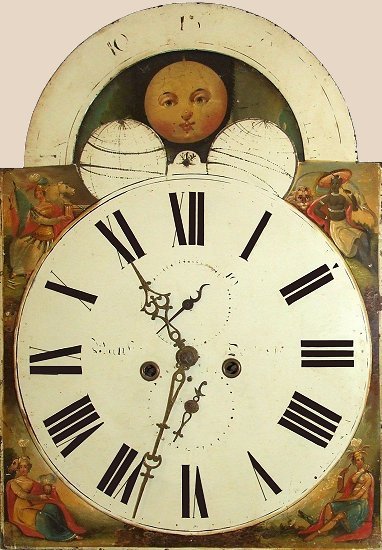 |
This clock carries the name Banks, Darlaston. It was
produced by George Banks who is listed in the 1818
edition of the Staffordshire General & Commercial
Directory, and the 1828 and 1842 editions of Pigot &
Company's Commercial Directory as a watch and clock
maker, in Church Street. He is listed identically in
White's 'History, Gazetteer and Directory of
Staffordshire', both in 1831 and 1851.
He was also the town's postmaster, and ran the town's
first post office from his premises in Church Street. He
is listed as such in White's 1851 edition of his
History, Gazetteer and Directory of Staffordshire.
He does not appear in any of the later directories.
In 1861 the postmaster was Henry Wright, so he had
possibly retired by that date. |
| A view of the clock mechanism. It appears to be a
standard mechanism that was widely used, so maybe George
Banks purchased the mechanism, the dial, and possibly
the case. Equally he could have purchased the whole
clock and had his name painted on the dial. |
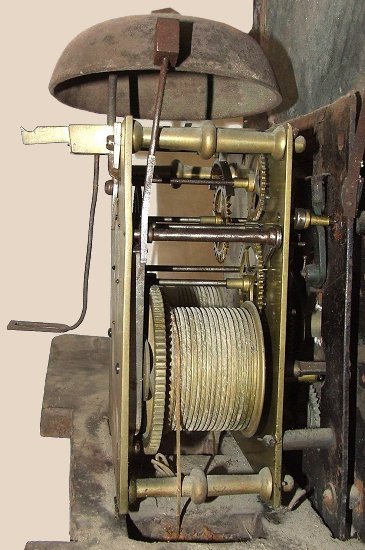 |
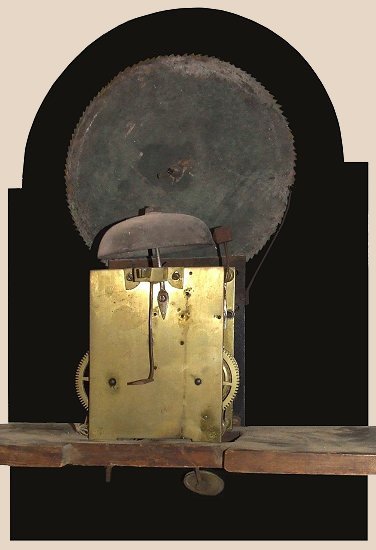 |
A final view of the clock. |
This photo of a fine example of a George Banks'
clock was kindly sent by Sean Quinn of Decorative Arts,
Waddington's Auctioneers, 275 King Street East, Toronto,
Ontario, Canada.
It has been described in their catalogue as an English
oak and mahogany tall case clock, by George Banks,
Darlaston, from the first half of the 19th century.
It has an enamelled dial in a traditional case with
Tunbridge and shell inlay, the trunk is flanked by ring
turned columns. The clock is 94 inches high.It is not
known if this is the original case for the clock. It was
included in a sale, and surprisingly didn't sell when
offered for $500 CAD (about £290). |
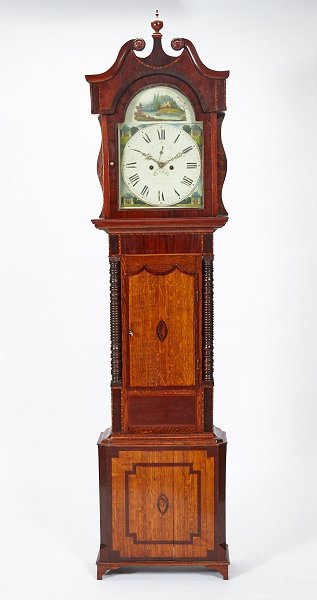 |
|
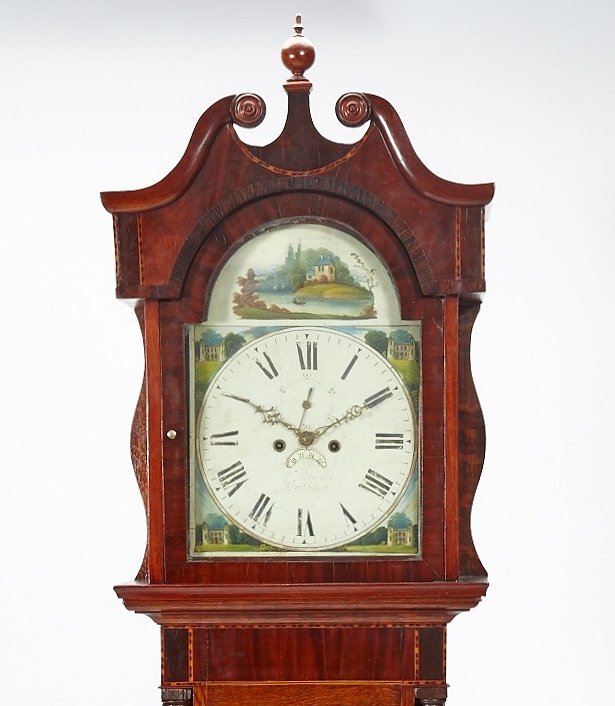
The finely painted clock face. |
|
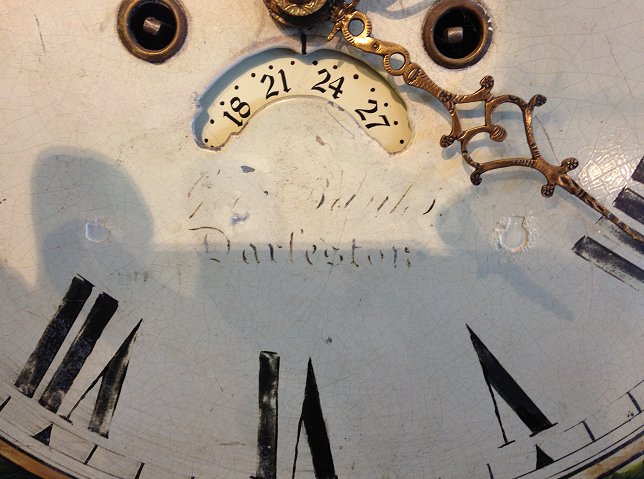
A close-up view showing the
maker's name. |
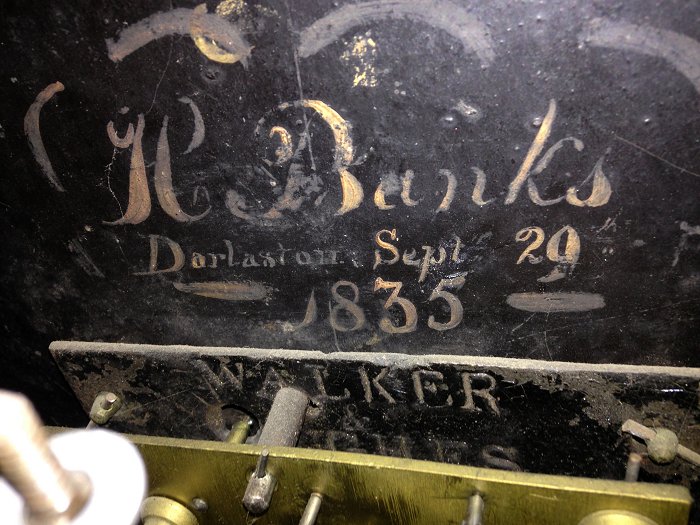
The back of the dial on the clock
above carries the customer's name and date, and the
false plate, the fixing plate for the dial, carries the
dial maker's name, which is Walker & Hughes of
Birmingham. Courtesy of Sean Quinn. |
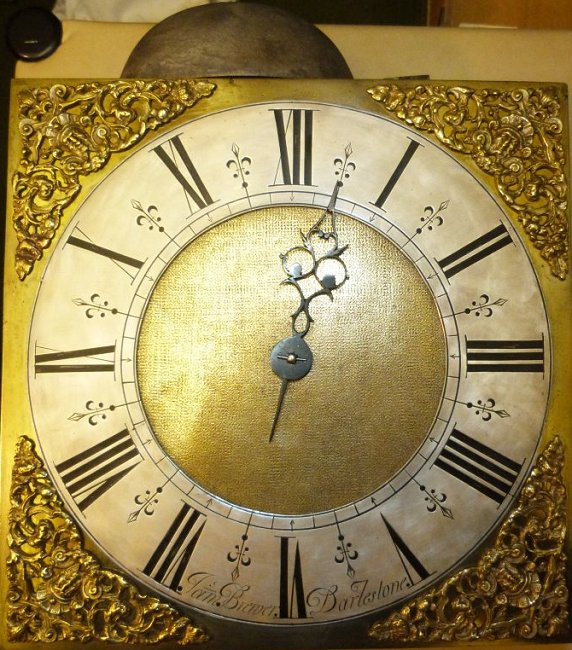
John Kelk's fine clock made by
James Brewer. John mentioned that James Brewer is
listed in Britten's
“Old Clocks And Watches And Their Makers” as being a
clockmaker of Darlaston who died in 1756. The clock
has a 30 hour movement with strike and single hour
hand with a 10 inch dial. John has dated his clock
between 1730 and 1740. |
|
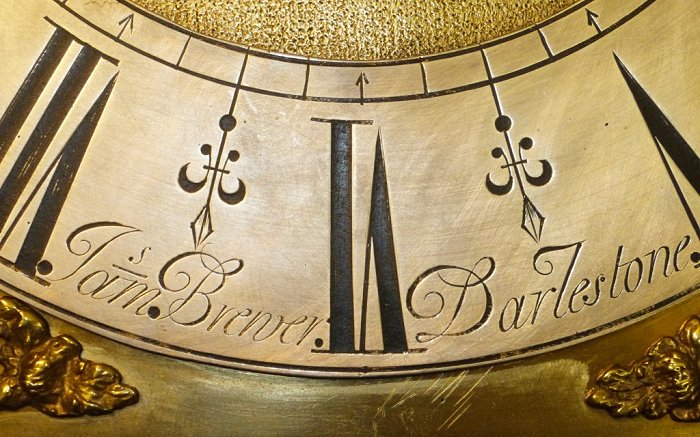
A close-up view of the maker's
name on John Kelk's clock. I must thank John for his
help with this section. |
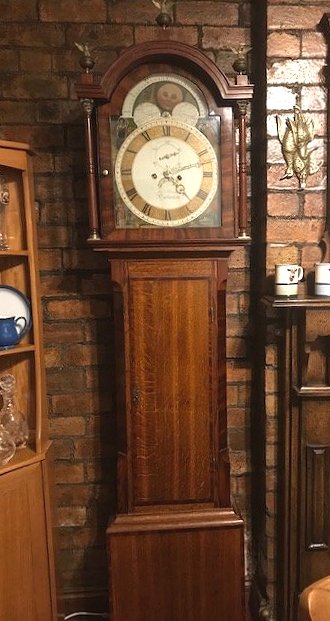 |
Another example of a fine clock made in
Darlaston. The maker was J. Blunt. The dial
was produced by
Walker
and Hughes.
The photographs
were kindly sent by the owner of the
clock, Jane Hartnell, who mentioned that
Walker and
Hughes were in business between 1812 and 1835,
which is an indication of the age of the clock.
If you have any
information about J. Blunt, please do
send me an
email.
|
|
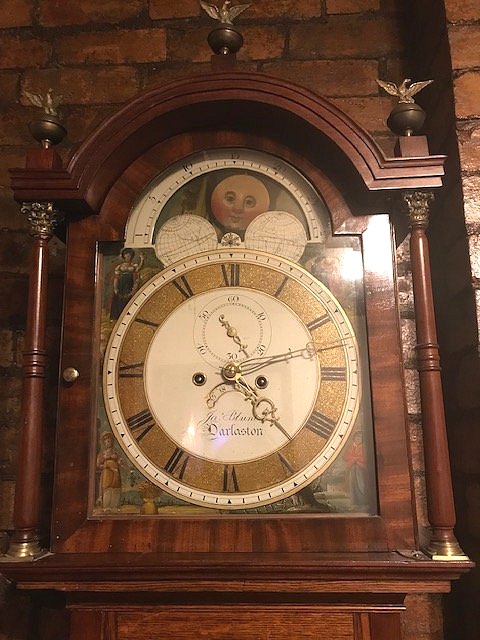
Another view of
Jane
Hartnell's lovely clock. |
| If anyone has any information on these or other
Darlaston clocks, or clockmakers, please
contact me
and I will be delighted to hear from you. |
 |
 |
 |
Return to
Early Growth |
Return to
Contents |
Proceed to
Churches & Chapels |
|